This post may contain affiliate links. Please see our disclosure policy.
Vegetarian baked beans are a delicious meal in a jar canning recipe that keeps all the flavor of classic baked beans, but without the meat.

Who doesn’t love a delicious meal that saves them money and time? If you’re looking for just that, then canning vegetarian baked beans is the perfect solution for you! This is an amazing way to preserve your favorite comfort food and enjoy it anytime you want.
Plus, canned baked beans are also a fantastic way to save money, since you can make a large batch and store them for a long time.
In this post, we will guide you through the process of canning vegetarian baked beans, including the tips and tricks that make it as easy as possible.
(If you’re looking for the “regular” non-vegetarian version of this recipe, please see my canning recipe for Boston baked beans.)
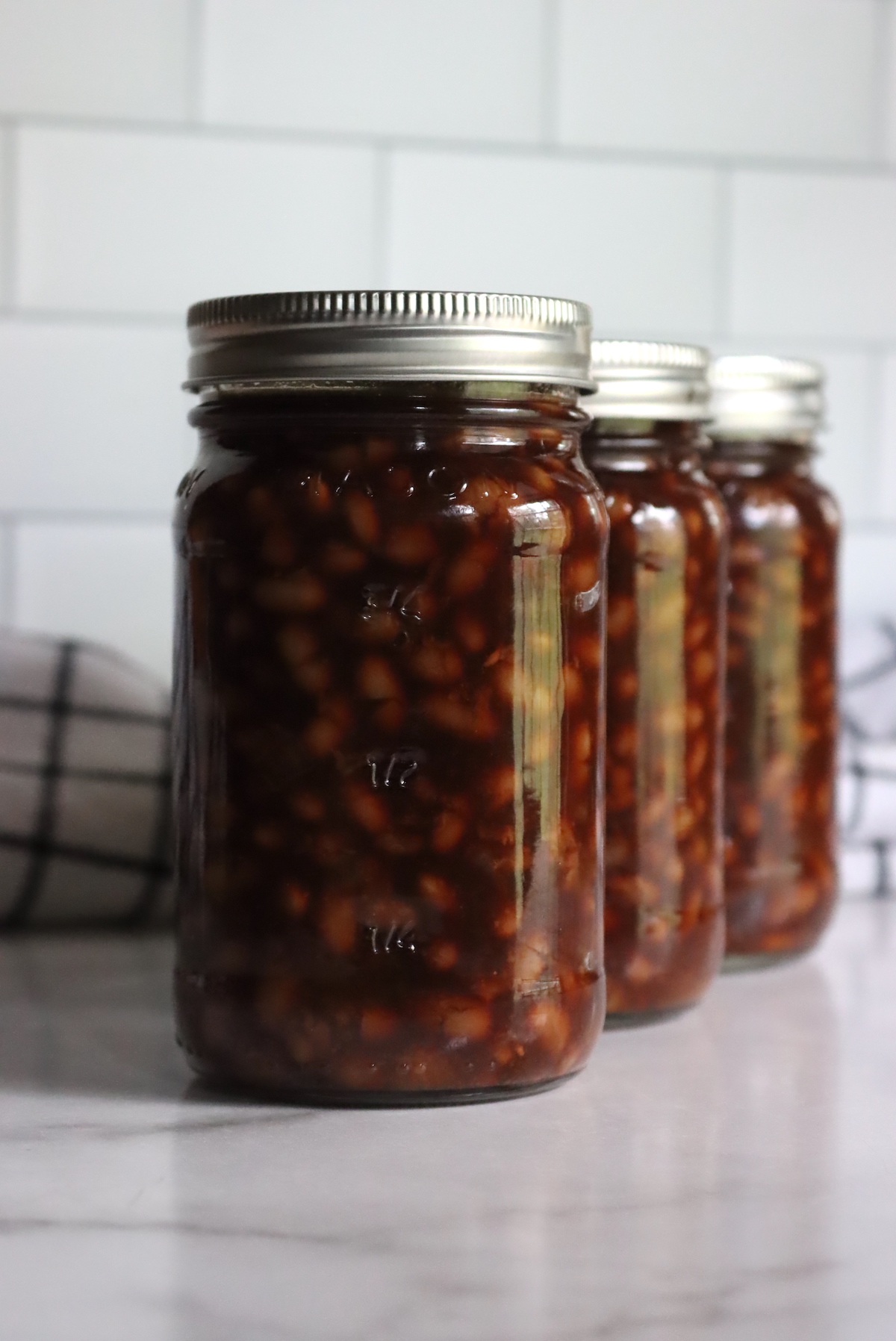
Ingredients for Vegetarian Baked Beans
The ingredients for canning vegetarian baked beans are quite simple. To make a canner batch of six pints, you’ll need the following:
- 1 quart dried navy beans
- 2/3 cup molasses
- 2/3 cup brown sugar
- 4 cups water (or vegetable stock/broth)
- 3 large onions, finely diced
- 3 tsp salt
- 2 tsp dry mustard
- 1 tsp liquid smoke (optional)
For the beans, you will need about four cups, or two pounds dried beans total.
You can replace the water with stock or broth if you’d like, for a richer flavor. Adding a teaspoon of liquid smoke will accomplish the same thing as well.
Don’t have dry mustard on hand? That’s okay! Plain-prepared yellow mustard will be fine.
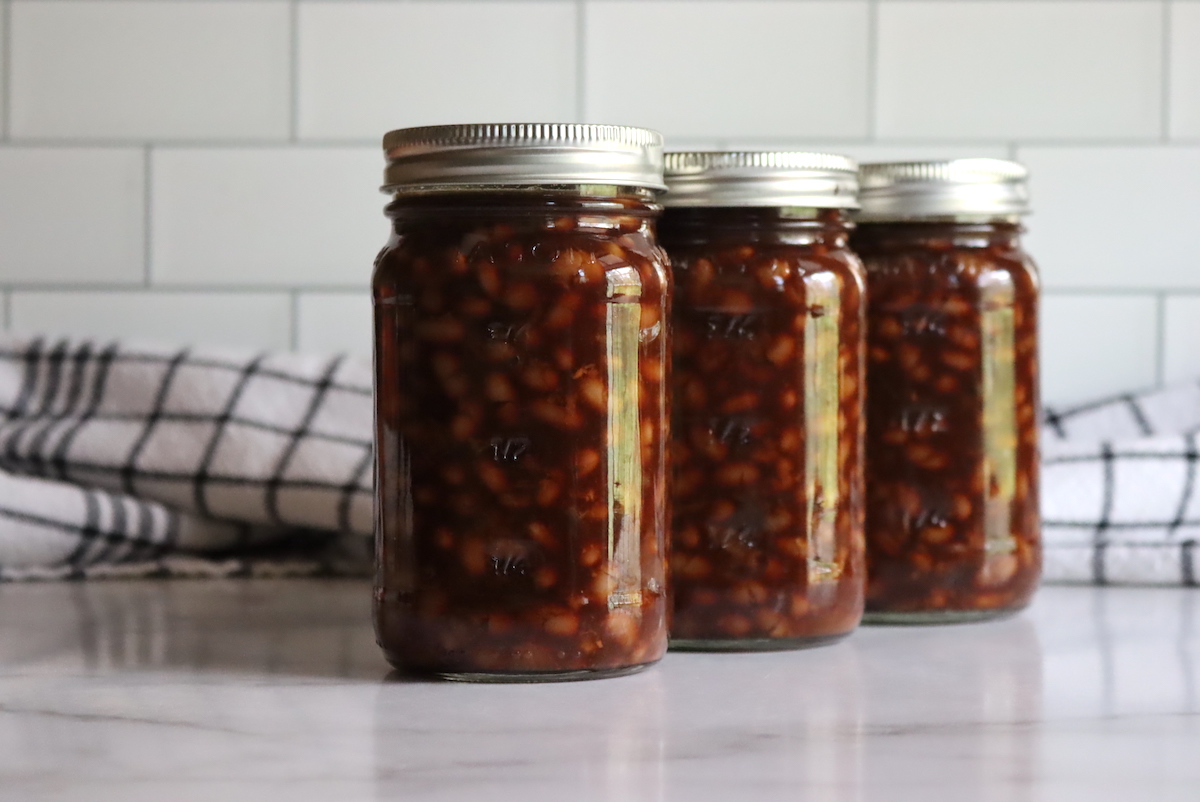
Canning Vegetarian Baked Beans
The first step in making delicious baked beans is to soak your beans overnight. Fill a large bowl with cool water and add your beans. Make sure they are completely submerged and set it aside for 6-8 hours.
If you don’t have that much time, you can use the “quick soak” method.
Drain the water and put the beans in a pot with fresh water. Bring the water to a boil, then a simmer. Cook your beans until they start to split, which usually takes around 45 minutes. Once done, drain the beans.
Now, it’s time to prepare the sauce. Mix the rest of the ingredients together in a large bowl, including water or stock, molasses, mustard, onion, garlic, brown sugar and salt. Make sure the sugar is completely dissolved, and the mixture is soupy.
Pour the sauce over the cooked beans, stirring it to coat every bean.
Preheat your oven to 300°F (150°C). Put the bean mixture in a four-quart Dutch oven and bake for about four hours. Keep checking and add water if necessary to keep the mixture nice and liquidy, and the water level just covering the top layer of beans.
Usually, around four to six cups of water are necessary, but it could be more if your Dutch oven is not creating a good seal. Add more if your beans start to dry out. Be patient, and don’t skip the baking time, as it’s essential to develop that delicious smoky flavor.
Next, prepare the canner based on the manufacturer’s instructions. Pre-heat it to around 180 degrees F.
Have some hot water in a pot ready to go. Put the beans in the jars while leaving an inch of headspace. Add the canning sauce from the bean pot while still maintaining that inch of headspace.
If your jars aren’t completely full, add hot water. Wipe the rims of the jar. Put on the lids, and seal the rings until they are fingertip tight.
Load the jars into the canner and put the lid on. Let steam to vent for 10 minutes. Add the weight, then bring it up to pressure. (See pressure table below, based on altitude.)
Process the jars for 80 minutes for pints and 95 minutes for quarts based on notes for pressures from different altitudes.
Once the processing time has finished, turn the burner off and allow the canner to return to zero pressure.
Remove the jars and let them cool for 24 hours. Check the seals and store for about one year.
Canning Pressures for Vegetarian Baked Beans
The total canning time does not change with altitude when pressure canning, but the pressure level does change at higher elevations. It also changes depending on the type of canner you’re using.
Be sure you know whether you’re working with a dial gauge canner (presto type) or a weighted gauge canner (all-American type).
Dial Gauge Canners:
- 0 to 2,000 feet in elevation use 11 pounds of pressure
- 2,001 to 4,000 feet in elevation use 12 pounds of pressure
- 4,001 to 6,000 feet in elevation use 13 pounds of pressure
- 6,001 to 8,000 feet in elevation use 14 pounds of pressure
Weighted Gauge Canners:
- 0 to 1,000 Feet in elevation use 10 pounds of pressure
- Above 1,000 Feet in elevation use 15 pounds of pressure
Serving Vegetarian Baked Beans
To serve your canned beans, all you need to do is open a jar and empty it into a bowl, then reheat.
If you’re serving vegetarian baked beans as a main dish, try pairing them with a green salad or steamed vegetables to round out the meal. Another great option is to serve them as a side dish with grilled vegetables or veggie burgers. They can also be a perfect accompaniment to macaroni and cheese.
For an extra zest of flavor, consider adding toppings like shredded cheese, diced onions, and jalapenos. You can also add a sweet flavor by stirring in maple syrup or brown sugar before heating. It’s important to note that some vegetarian baked beans already contain sweeteners, such as molasses or honey, so be sure to check the label before adding more.
When it comes to a gathering or potluck, vegetarian baked beans are a real hit!

Canning Vegetarian Baked Beans
Equipment
Ingredients
- 1 Quart dried navy beans
- 2/3 cup molasses
- 2/3 cup brown sugar
- 4 cups water, or vegetable stock/broth
- 3 large onions, finely diced
- 3 tsp salt
- 2 tsp dry mustard powder
- 1 tsp liquid smoke, optional
Instructions
- Soak your beans overnight or by using the quick soak methods.
- Drain the water and put the beans in a pot with fresh water. Bring the water to a boil, then come down to a simmer. Cook until the beans begin splitting, which usually takes around 45 minutes. Drain the beans.
- Mix the remaining ingredients together in a large bowl, including water or stock, molasses, mustard, onion, garlic, brown sugar and salt. Make sure the sugar is completely dissolved, and the mixture is soupy.
- Drizzle the sauce over the cooked beans, stirring it to coat every bean.
- Preheat your oven to 300°F (150°C). Put the bean mixture in a four-quart Dutch oven and bake for about four hours. Add water if necessary to keep the beans from cooking dry (usually not necessary if your dutch oven has a nice tight seal.) At this point, the baked beans are done and you can taste them and adjust seasonings or salt to taste.
- Prepare the canner. Have some hot water in a pot ready to go.
- Put the beans in the jars while leaving an inch of headspace. Add the sauce from the bean pot while still maintaining that inch of headspace.
- If your jars aren't completely full, add hot water. Wipe the rims of the jar. Put on the lids, and seal the rings until they are finger tip tight.
- Load the jars into the canner and put the lid on. Let steam vent for 10 minutes. Add the weight, then bring it up to 11 lbs pressure.
- Process the jars for 80 minutes for pints and 95 minutes for quarts based on notes for pressures from different altitudes.
- Once the processing time has finished, turn the burner off and allow the canner to return to zero pressure.
- Remove the jars and let them cool for 24 hours.
- Check the seals and store for about one year.
Notes
Canning Pressures for Vegetarian Baked Beans
The total canning time does not change with altitude when pressure canning, but the pressure level does change at higher elevations. It also changes depending on the type of canner you're using. Be sure you know whether you're working with a dial gauge canner (presto type) or a weighted gauge canner (all-American type).Dial Gauge Canners:
- 0 to 2,000 feet in elevation use 11 pounds of pressure
- 2,001 to 4,000 feet in elevation use 12 pounds of pressure
- 4,001 to 6,000 feet in elevation use 13 pounds of pressure
- 6,001 to 8,000 feet in elevation use 14 pounds of pressure
Weighted Gauge Canners:
- 0 to 1,000 Feet in elevation use 10 pounds of pressure
- Above 1,000 Feet in elevation use 15 pounds of pressure
Nutrition
Nutrition information is automatically calculated, so should only be used as an approximation.
Vegetarian Canning Recipes
Need a few more meatless meal-in-a-jar canning recipes?
- Canning Carrot Soup
- Canning Chipotle Black Bean Soup
- Canning Butternut Squash Soup Base
- Canning Butternut and White Bean Soup
- Canning Thai Coconut Squash Soup
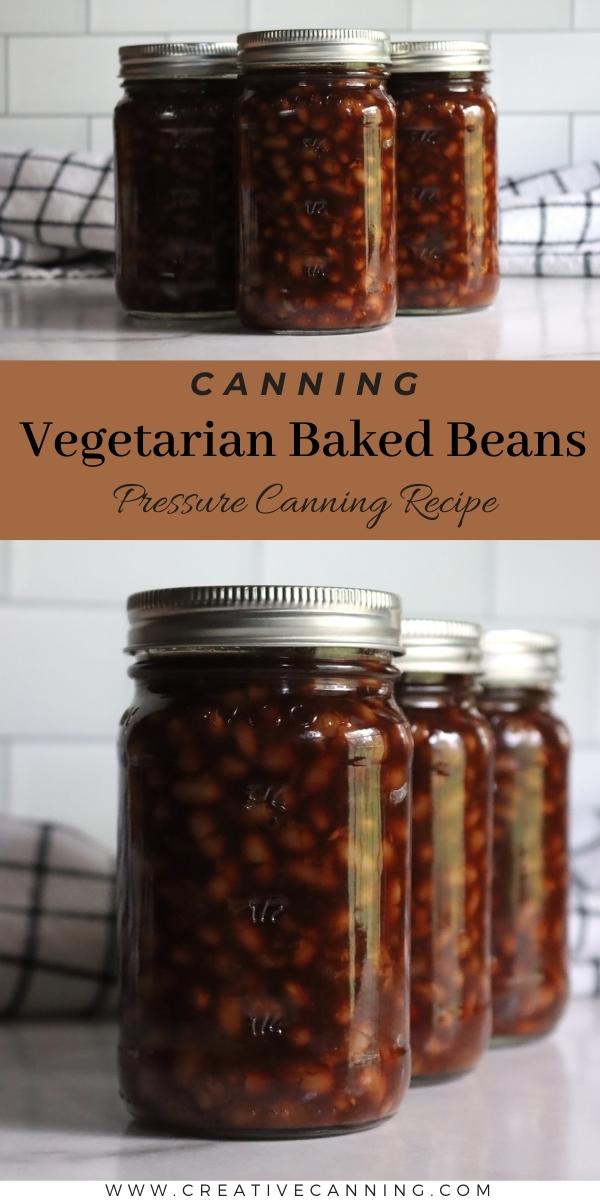
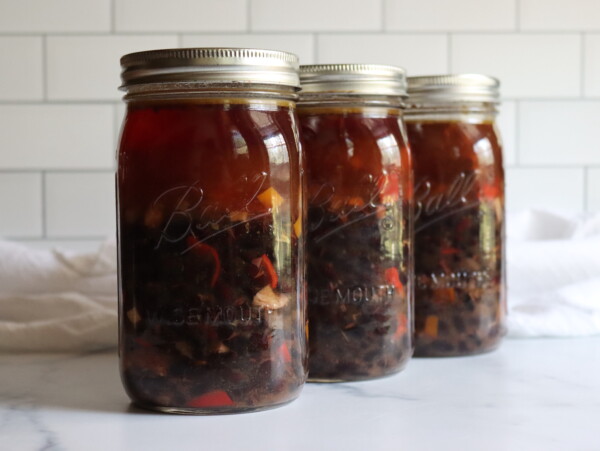
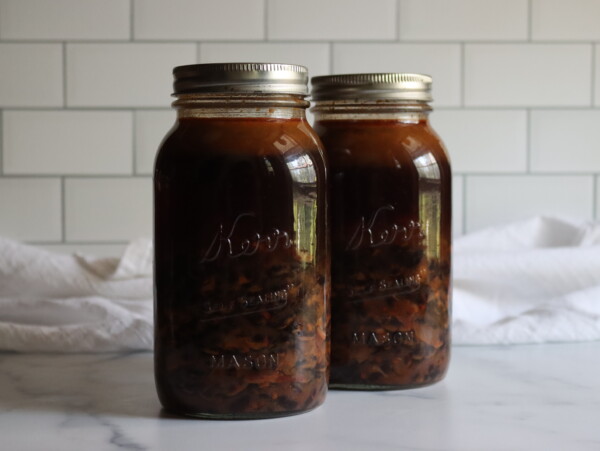
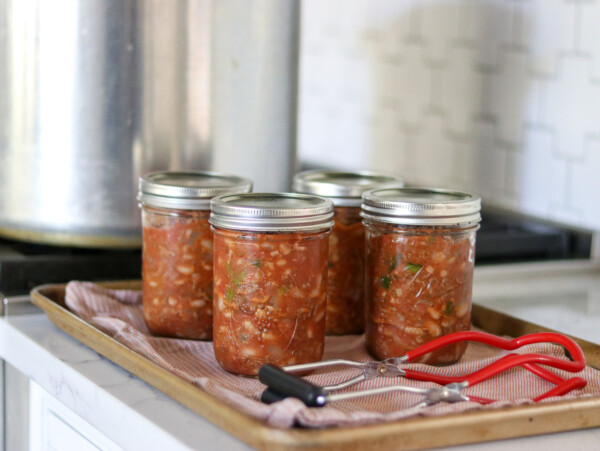
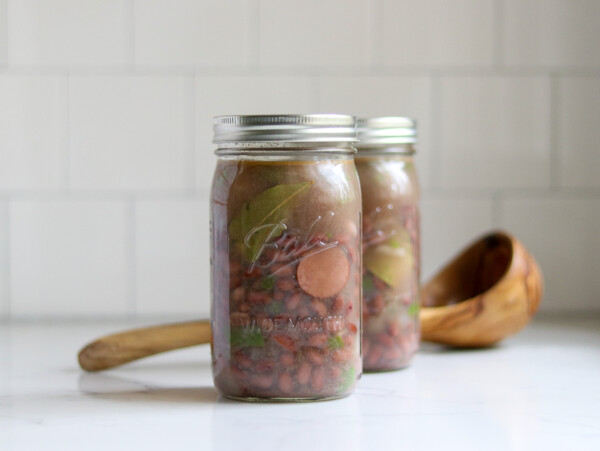
Just wondering why you say the following when there is no tomato sauce or garlic in ingred and also why a bit a sugar…don’t we use it all? I copied and pasted what you say…..
Now, it’s time to prepare the sauce. Mix the rest of the ingredients together in a large bowl, including tomato sauce, molasses, mustard, onion, garlic, and a bit of brown sugar. Make sure the sugar is completely dissolved, and the mixture is soupy.
I compared it to your reg beans w/bacon and it’s not written the same. Just a little confusing, as I’m making them now I’ll just follow the bacon one minus the bacon….thanks
Oops! Thanks for catching that! I sometimes make baked beans with tomato sauce, and my brain just auto completed there. I’ve fixed the recipe now, thank you. (And yes, the instructions are pretty much the same as the basic Boston baked beans, but just without the added meat, so that’s correct.)